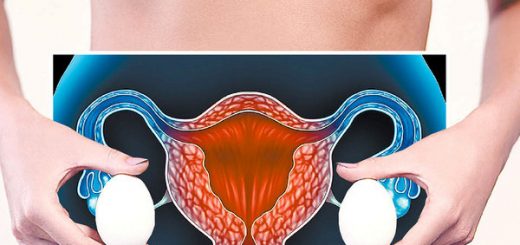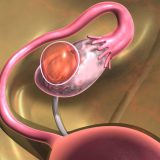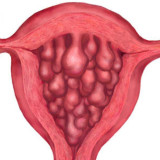Functional ovarian cyst is a fairly common disease. In addition to the fact that in modern gynecological practice such registered and treated diseases are not considered as a rare, there are a lot of woman who do not know they have a functional cyst.
Even though most of the functional ovarian tumors are quite harmless, under certain conditions, they may cause a threat to the health of the patient. That is why today, many woman are interested in getting more information about the causes, symptoms and treatments for this disease. So how dangerous can be a functional cyst in the ovary? Is it possible to diagnose the disease by yourself?
What is the functional cyst?
A functional ovarian cyst is a benign formation which is formed after the ovum maturation. In most cases, such a structure has a rounded shape with smooth walls. It can be located both on the surface and inside the ovary body.
The size of functional ovarian cysts may be different. As a rule it does not exceed a diameter of a few millimeters. However, larger tumors are also often found during the medical examinations. Sometimes they can reach a diameter of 15-20 centimeters, that obviously leads to dangerous consequences.
It is worth noting that a small cyst in the ovary is rarely brings threat to the health and lives of the women. Quite often, such tumors go away on their own and disappear after 2-4 complete menstrual cycles. Dangerous functional ovarian cyst is the large cyst, as there is always a risk of rupture. Moreover, the large tumor press the surrounding tissues, causing discomfort and a variety of risks.
Main functional ovarian cyst causes
Why do functional ovarian cyst form? Causes and mechanisms of such pathologies are still not fully understood. But researchers and doctors have identified several factors that may contribute to the development of such tumors.
Of course, the main reason is the hormonal failure. One of the most important is estrogen increasing in the body. Such hyperestrogenia leads to the development of anovulatory cycle, which contributes to the appearance of the cysts.
There are many risk factors that can cause functional ovarian cysts because of the hormonal failure. Each of them in one or another way affect the levels of the sex hormones and impact on the immune system.
For example, functional ovarian cyst often occurs after a recent myocardial abortion. Another risk is uncontrolled hormonal agents (including medications and emergency contraception). Some of the thyroid gland diseases are also among the risks.
What more, the functional cyst causes can be more commonplace. For example, it is proved that the risk of the disease is increased in the presence of acute and chronic infections in the pelvic organs, including sexually transmitted diseases. Consequently, among risk factor is frequent sexual partners changing.
On the endocrine system also affects the way of life of the patient. In particular, heavy physical loads, mental strain, the constant lack of sleep, frequent stress affect the work of female body.
By the way, sometimes a functional ovarian cyst is detected even in baby girls. This phenomenon is due to the influence of mother hormones to the child during pregnancy or breastfeeding.
Where do the functional ovarian cysts form?
According to statistics, functional ovarian cyst in left ovary is more common in gynecological practice. This phenomenon is associated with certain physiological characteristics of female reproductive system.
There is also the fact that ovum maturation and follicular rupture often occurs in the left ovary.
A functional ovarian cyst in the right side is diagnosed less often. Moreover, this formation can also be associated with intestinal infections. Moreover, it is located in this side of appendix – the right variety of diseases of the women reproductive system (including cystic) is often paired with appendicitis.
Functional ovarian cyst types
Today, there are two main types of functional ovarian cysts:
- Follicular cyst is formed when the follicle after mature ovule is not released. Thus, it remains inside, and the cavity follicle starts accumulating liquid.
- Corpus luteum cyst forms after the mature egg left its follicle. The cystic tumor locates in the corpus luteum, which for some or another reason do not disappear.















